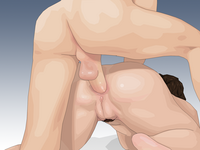
Photo from wikipedia
Purpose Cup positioning is important for optimum hip stability, avoiding component impingement and decreasing both bearing surface wear and revision rate. Transitioning from posterior approach in a lateral position to… Click to show full abstract
Purpose Cup positioning is important for optimum hip stability, avoiding component impingement and decreasing both bearing surface wear and revision rate. Transitioning from posterior approach in a lateral position to direct anterior approach (DAA) in a supine presents unique challenges for surgeons. The aim of this study was to examine the learning curve when using standard instrumentation that was not specific to DAA. Methods A consecutive retrospective series of 537 total hip arthroplasty by DAA from May 2013 to December 2017. Cup positioning was analysed on radiographs and classified whether inside or outside two safe zones (inclination 30–50° and anteversion 10–30°). The demographic data (age, BMI, gender, neck shaft angle (NSA)), surgeon’s dominant side and experience were assessed as risk factors. Results Eighty per cent of cups ( n = 426) were in the combined safe zones. Eighty-eight per cent ( n = 470) were in appropriate anteversion and 87% ( n = 463) abduction. Two factors that were significant were identified: Cups of left hips operated by right-handed surgeons were more anteverted (OR = 4.06) and more vertical (OR = 2.23); females had a higher anteversion of the cup (OR = 2.42). Obesity, age and NSA were not risk factors for cup malposition. There was a spike of cups too horizontal at the beginning of the experience (OR = 3.86), and no learning curve was observed in the other orientations. Conclusion With our DAA technique using standard instrumentation, there were no risk factors linked to the patient identified for cup malposition. DAA-specific instrumentation is not required to achieve optimum positioning of the cup. Surgeon has to be aware of an excess of abduction at the beginning of his experience and an excess of anteversion and adduction when performing THA on the opposite side of his dominant hand.
Journal Title: International Orthopaedics
Year Published: 2020
Link to full text (if available)
Share on Social Media: Sign Up to like & get
recommendations!